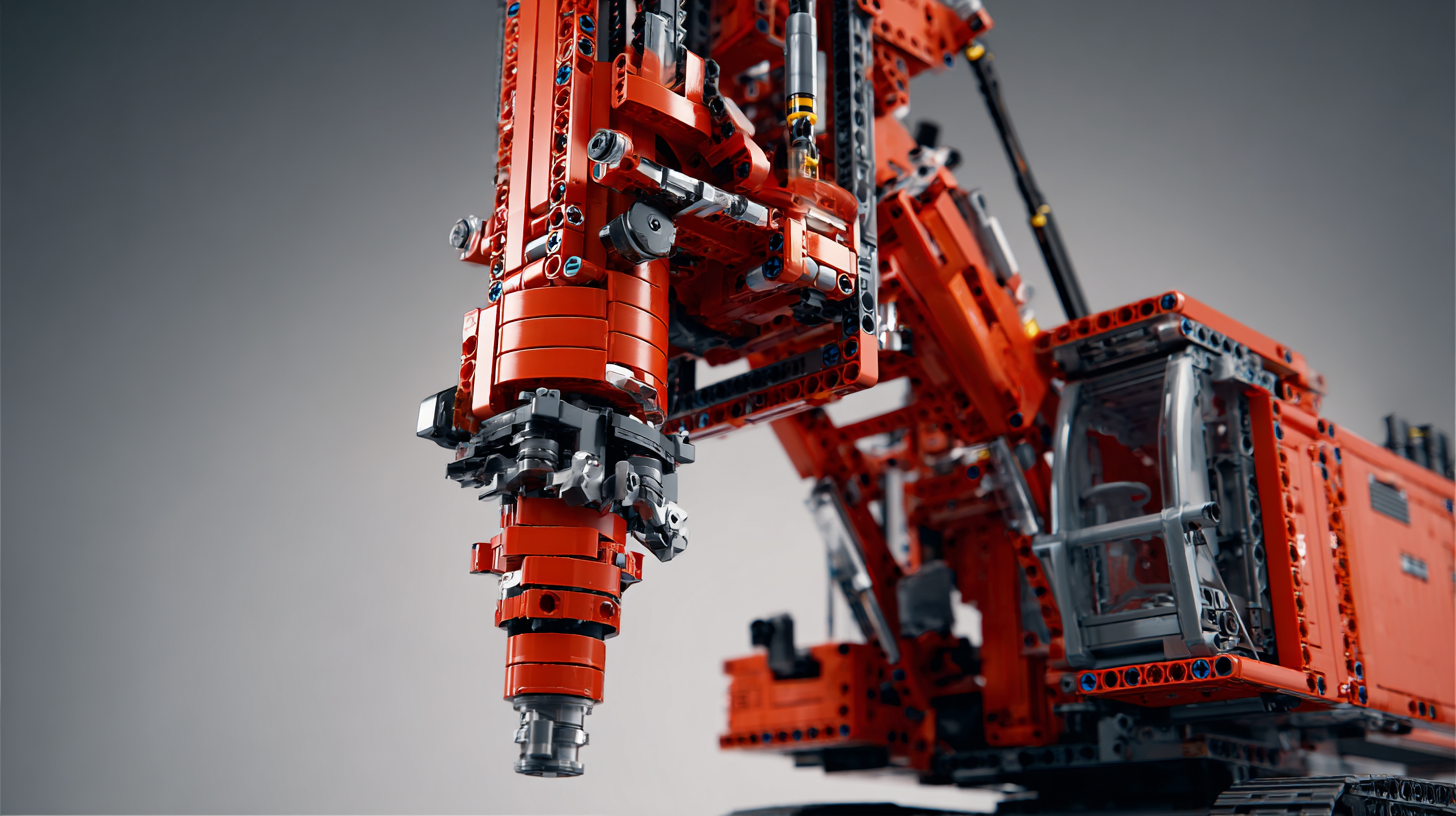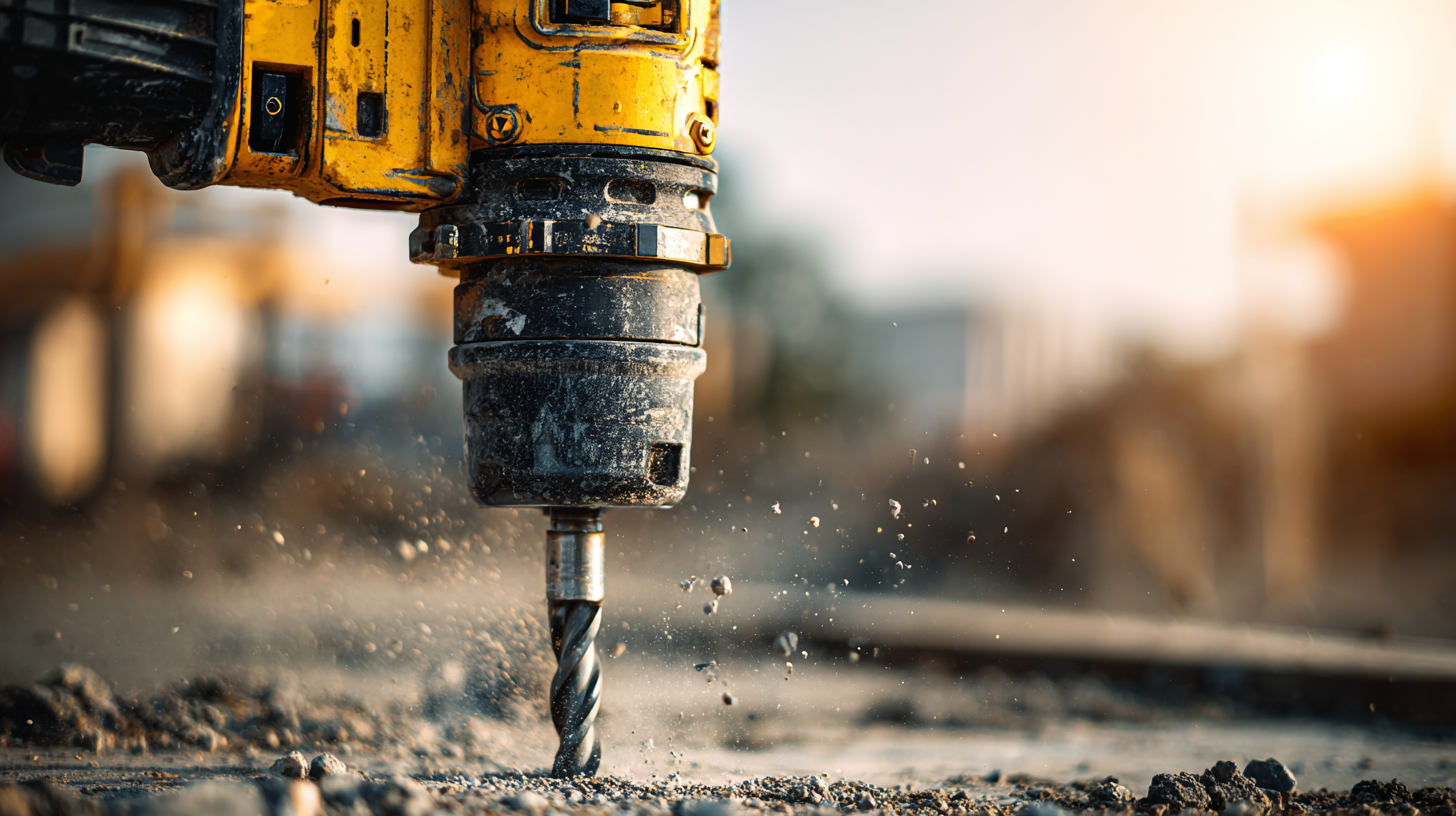Innovative Alternatives to the Best Drilling Machine for Your Project Needs
In the rapidly evolving construction and manufacturing sectors, the demand for efficient and versatile tools, particularly drilling machines, has surged. According to a recent market analysis report by Research and Markets, the global drilling machine market is expected to grow significantly, reaching USD 7.5 billion by 2027, driven by advancements in technology and the increasing need for precision in various applications. This growth reflects a broader trend toward innovation, pushing professionals to seek alternatives to conventional drilling machines that can offer enhanced functionality, portability, and energy efficiency. With the myriad of options available, selecting the right tool tailored to specific project needs has never been more crucial. In this blog, we will explore some cutting-edge alternatives to traditional drilling machines, highlighting their technical specifications and performance capabilities to help you make an informed decision for your next project.

Alternatives to Traditional Drilling: Exploring Modern Techniques for Efficiency
When it comes to drilling, traditional methods have long dominated the industry. However, recent advancements have introduced a variety of innovative techniques that not only enhance efficiency but also reduce environmental impact. One such alternative is high-frequency drilling, which utilizes advanced vibration technology to penetrate materials with minimal effort. This technique not only speeds up the drilling process but also decreases wear on both the machinery and tooling, ultimately leading to cost savings for projects.
Another modern approach gaining traction is the use of water jet cutting. This technique employs high-pressure water streams to slice through materials without the heat-affected zones typical with traditional drilling. Water jet cutting is particularly effective for delicate materials that cannot withstand the thermal stress from conventional drilling methods. Additionally, it generates less waste and pollution, making it an eco-friendly choice for various applications.
Exploring these alternatives opens up new possibilities for project managers and builders. By integrating modern drilling methods, teams can achieve improved precision and efficiency, addressing the growing demand for sustainability in construction and manufacturing. Embracing these techniques not only boosts productivity but also positions businesses at the forefront of innovation in their respective fields.

Evaluating the Cost-Effectiveness of Advanced Drilling Technologies in Projects
In the rapidly evolving landscape of drilling technologies, the oil and gas industry is witnessing substantial advancements aimed at enhancing cost-effectiveness. A recent supervised machine learning model shows promise in selecting the most economical directional drilling tools, reflecting the industry's push towards integrating digital technologies. This innovation is particularly noteworthy given the increased directional drilling activities, where making informed decisions can directly impact project budgets and operational efficiency.
Moreover, the application of novel AI techniques is proving vital in optimizing drilling performance. By mitigating the impacts of drill-string vibrations, these technologies enhance drilling efficiency, leading to significant cost savings. The financial evaluation of mining innovation pilot projects highlights the importance of quantifying the value of new technologies rather than merely focusing on their initial costs. This approach aligns with the broader trend of leveraging advanced digital manufacturing frameworks, such as those emerging in Mexico, which offer further nearshoring opportunities that could revolutionize project execution in various sectors.
The Rise of Eco-Friendly Drilling Solutions: Sustainable Practices and Innovations
As the demand for eco-friendly drilling solutions rises, innovative advancements are shaping the industry, notably through the use of biodegradable additives in drilling fluids. Recent studies have highlighted the efficacy of these biodegradable waste additives, which enhance the properties of both water- and oil-based drilling systems. This shift is crucial for addressing environmental sustainability concerns within the oil and gas sector, where traditional methods often lead to significant ecological footprints.
Moreover, industry experts like Jeremiah Osuji are pioneering sustainable innovations in drilling fluid engineering. With over 14 years of experience, his initiatives set new benchmarks for eco-conscious practices within the field. Innovations in drilling technologies are also transforming mining operations. For instance, the global Oilfield Chemicals Market is projected to reach USD 65 billion by 2025, driven by the increasing emphasis on sustainability and automation. This growth reflects a broader trend in the mining industry, where emerging technologies not only improve resource extraction efficiency but also substantially lower environmental impacts. As we move towards 2025, it's evident that the integration of sustainable practices is not just a trend but a necessity for the future of drilling and mining activities.
Innovative Alternatives in Eco-Friendly Drilling Solutions
A Comparison of Rotary vs. Percussive Methods: Which is Best for Your Needs?
When it comes to selecting the right drilling method for your project, understanding the key differences between rotary and percussive methods is essential. Rotary drilling involves the continuous rotation of a drill bit to create holes in various materials. This method is often favored for its efficiency and effectiveness in softer substrates like wood, plastic, and even some metals. It allows for a precise and smooth finish, making it ideal for applications that require accuracy, such as creating holes for installing fixtures or fittings.
On the other hand, percussive drilling employs a hammering action in addition to rotation, which can be particularly beneficial when working with hard materials such as concrete or rock. The rapid impacts of percussive drilling can break through tough surfaces quickly, making it a preferred choice for construction projects that involve foundations or large-scale excavation. However, this method can create more vibration and noise, which may not be suitable for all environments or applications. By weighing the benefits and drawbacks of each drilling technique, you can make an informed decision that aligns with your project's specific requirements.
Innovative Alternatives to the Best Drilling Machine for Your Project Needs - A Comparison of Rotary vs. Percussive Methods: Which is Best for Your Needs?
| Drilling Method | Advantages | Disadvantages | Best Applications | Cost Estimate |
|---|---|---|---|---|
| Rotary | High efficiency, suitable for hard materials | Less effective in very soft soils | Concrete, rock drilling, and geological projects | $3000 - $8000 |
| Percussive | Effective in soft and hard soils, good for water wells | Can be slow and less efficient in hard rock | Well drilling, foundation work, and mining | $2500 - $7000 |
| Combination | Versatile for a wide range of materials | Requires specific equipment for each method | Diverse projects requiring adaptability | $4000 - $9000 |
Understanding the Impact of Automation in the Drilling Industry: Data-Driven Insights
The emergence of automation technology is reshaping the drilling industry, driving efficiency and precision to new heights. By leveraging data-driven insights, companies are not only enhancing operational performance but also optimizing resource allocation. Automated drilling machines equipped with advanced sensors collect real-time data, allowing operators to monitor drilling conditions and make informed decisions. This transition towards smart drilling systems minimizes human error and reduces downtime, ultimately leading to cost savings and improved project timelines.

Furthermore, the integration of artificial intelligence (AI) into drilling operations offers a transformative approach to problem-solving. AI algorithms can analyze historical performance data and current operational metrics to predict potential challenges before they arise. This proactive stance not only enhances safety protocols but also empowers teams to implement innovative solutions tailored to specific project needs. As automation continues to advance, the drilling industry is poised to experience a significant evolution, driving towards a future where data analytics and technology are at the forefront of operational success.
